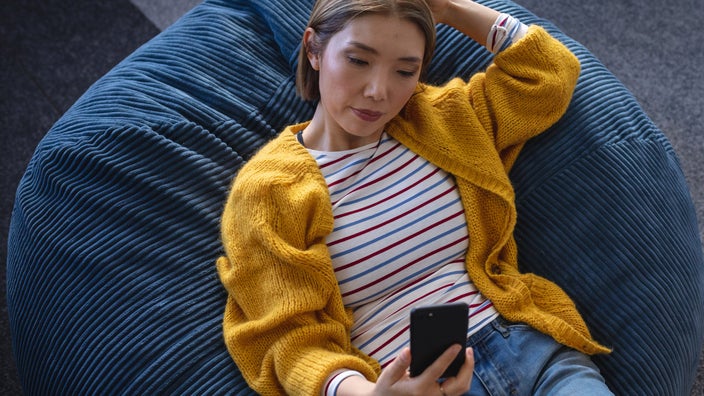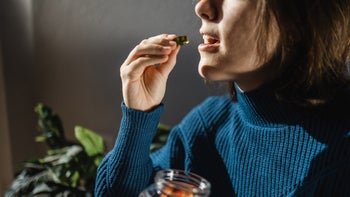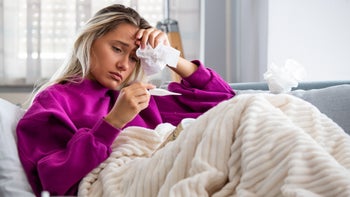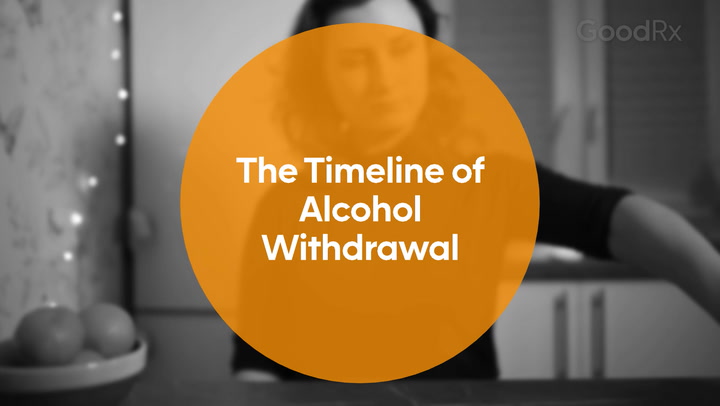
What Is Microdosing? Benefits, Effects, Safety, and More
Key takeaways:
Microdosing is the practice of consuming very small amounts of psychedelics, which are substances that can produce hallucinations.
There’s not enough evidence yet to say whether microdosing has any benefits. More research is needed to know if microdosing is useful for mental and physical health.
Although microdosing may seem interesting, keep in mind that psychedelics are illegal and have risks.
Table of contents

Many people are searching for ways to feel better, be happier, and gain more from life. With this in mind, some people are experimenting with microdosing psychedelics, including LSD and psilocybin (“magic mushrooms”).
Microdosing is the popular trend of taking a small amount of a psychedelic drug — an amount low enough that it doesn’t cause hallucinations. Some people feel like microdosing might boost their mood, focus, and creativity.
Microdosing is getting a lot of attention in the media. But here’s the reality: There just isn’t enough evidence yet to say if microdosing is beneficial — or even safe. And psychedelics are still illegal in the U.S.
Search and compare options
What is microdosing?
Microdosing is the practice of taking a small amount of a psychedelic drug — like LSD or psilocybin — on a fixed schedule. Several U.S. cities have decriminalized some of these psychedelic drugs, meaning it isn’t a crime to have or use them. But all psychedelics are still illegal to possess or use in the U.S. under federal law.
Psychedelics commonly used recreationally include:
LSD
Psilocybin (“magic mushrooms”)
Ayahuasca
Mescaline
MDMA (ecstasy)
People are experimenting with microdosing these psychedelics, and advocates say the practice helps with mood and well-being. But the research needs to catch up, and healthcare professionals and scientists aren’t convinced yet.
At this point, there’s just no clear evidence that microdosing has any mental or physical health benefits. Of course, this may change in the coming years with more research.
How much is a microdose?
Researchers generally consider a microdose to be about 5% to 10% of a normal recreational dose:
LSD: A typical hallucinogenic dose of LSD might be 100 mcg to 200 mcg, and a microdose would be about 5 mcg to 20 mcg.
Psilocybin (“magic mushrooms”): A typical hallucinogenic dose of psilocybin might be 20 mg, and a microdose would be 1 mg to 2 mg.
Read more like this
Explore these related articles, suggested for readers like you.
The goal is to take enough to have potential benefits — but without causing someone to hallucinate or feel “high.”
What is a typical microdosing schedule?
There are a few common microdosing schedules that people tend to follow. Typical microdosing schedules include:
Two days of microdoses followed by 2 days without
Every other day use
Microdoses Monday to Friday, but not on the weekend days
There’s no evidence to support any one microdosing schedule over another. Some people may choose to microdose every day, but that’s not very common. That’s because it’s believed that microdosing can have a lasting effect, and daily dosing isn’t necessary.
There’s also a risk of developing a tolerance to the substance with frequent microdosing. This means your body can get used to the frequent microdosing and may need higher doses to have an effect.
How long does microdosing last?
Many people choose to make up their own microdosing routine based on their results. On average, microdosing can last for a week up to 2 years or more. Most people stop microdosing when they feel they are no longer getting the desired effect.
Psilocybin and your health: Psilocybin is the active chemical in “magic mushrooms.” Here’s how it affects the mind and body and what research shows about its potential health benefits.
LSD and mental health therapy: LSD is another psychedelic drug that causes changes in mood and perception. Here are the uses scientists are studying.
Ketamine and depression: Ketamine has been used in medicine for different reasons over the decades. Learn more about the growing research on ketamine as a treatment for depression.
Potential benefits of microdosing
It’s not clear what the true benefits of microdosing are. Like psilocybin-assisted therapy, microdosing might help treat mental health conditions such as depression. But there’s just not enough evidence to say for sure yet.
Some studies report that people who microdose can have the following benefits:
Improved mood
Lower anxiety
Clearer thinking abilities
More focus and motivation
Decreased substance use
Increased sense of well-being
But the evidence is mixed. The data showing benefits of microdosing is often only based on self-reported symptoms. Some people who microdose also report higher anxiety and lower mood.
There’s also some evidence that microdosing may work for migraines and cluster headaches. But many consider microdosing to be a last-resort treatment option.
Similarly, preliminary research has shown some potential benefit from microdosing for attention-deficit hyperactivity disorder (ADHD). But there are no randomized controlled trials yet to back up these claims.
There may be a large placebo effect with microdosing. This means that people who expect an effect from the microdosing seem to notice the most benefit. More clinical trials will help to distinguish a placebo effect from actual health benefits from microdosing.
Is microdosing safe?
Microdosing is generally regarded as having a low risk of negative side effects. But there isn’t enough scientific evidence yet to say whether microdosing is safe.
One of the biggest challenges with microdosing is that most people aren’t sure if they are getting the proper dose. It’s hard to know exactly how much of the substance you have in each dose, and it’s possible to take higher doses than intended. This is a common reason for negative side effects as well.
Possible negative side effects of microdosing
In one small survey, some of the challenges people experienced when microdosing included:
Problems paying attention
Problems thinking clearly (brain fog)
Low energy
Low mood
More anxiety
Appetite changes
Upset stomach
Migraines and headaches
Uncomfortable physical sensations, like numbness or tingling
Difficulty in social settings
Unwanted “trips” or hallucinations
Microdosing also carries the potential legal consequences of buying, possessing, and using these substances. Plus, when you get a substance from an unregulated source, you can’t be sure of the contents, contaminants, or potency.
Are psychedelics legal?
Psychedelics are illegal in the U.S. under federal law, but some states and cities have passed laws to decriminalize certain drugs. Decriminalization usually means people who possess or use illegal drugs won’t face harsh criminal penalties if they’re caught.
Some states are also paving the way for the use of psychedelics as medical treatment. For example, in 2020 Oregon became the first state to approve psilocybin-assisted therapy in supervised healthcare facilities.
The bottom line
Despite the attention around microdosing and the popularity of the practice, it’s too early to know its full impact. More research will help uncover more information so experts can better understand how microdosing may be used for some health conditions. But for now, the risks and legal concerns are real, and may outweigh potential benefits. Psilocybin and LSD are still illegal under federal law.
Why trust our experts?



If you or someone you know struggles with substance use or another mental health condition, help is available. Call the National Helpline from the Substance Abuse and Mental Health Services Administration (SAMHSA) at 1-800-662-HELP (4357) to learn about resources in your area.
References
Anderson, T., et al. (2019). Psychedelic microdosing benefits and challenges: An empirical codebook. Harm Reduction Journal.
Andersson, M., et al. (2017). Psychoactive substances as a last resort — a qualitative study of self-treatment of migraine and cluster headaches. Harm Reduction Journal.
Drug Policy Alliance. (2006). Drug decriminalization could begin in California July 1.
Haijen, E. C. H. M., et al. (2022). Microdosing with psychedelics to self-medicate for ADHD symptoms in adults: A prospective naturalistic study. Neuroscience Applied.
Hutten, N. R. P. W., et al. (2019). Motives and side effects of microdosing with psychedelics among users. International Journal of Neuropsychopharmacology.
Johnstad, P. G., et al. (2018). Powerful substances in tiny amounts: An interview study of psychedelic microdosing. Nordic Studies on Alcohol and Drugs.
Kuypers, K. P. C., et al. (2019). Microdosing psychedelics: More questions than answers? An overview and suggestions for future research. Journal of Psychopharmacology.
Kuypers, K. P. C. (2020). The therapeutic potential of microdosing psychedelics in depression. Therapeutic Advances in Psychopharmacology.
Polito, V., et al. (2019). A systematic study of microdosing psychedelics. Public Library of Science One.
Polito, V., et al. (2022). The emerging science of microdosing: A systematic review of research on low dose psychedelics (1955-2021) and recommendations for the field. Neuroscience and Biobehavioral Reviews.
Rootman, J. M., et al. (2021). Adults who microdose psychedelics report health related motivations and lower levels of anxiety and depression compared to non-microdosers. Scientific Reports.
Sabatier, J. (2021). Oregon’s psilocybin program starts to take shape. Oregon Public Broadcasting.
Smith, D. G. (2022). More people are microdosing for mental health. But does it work? The New York Times.
Van Elk, M., et al. (2021). Effects of psilocybin microdosing on awe and aesthetic experiences: A preregistered field and lab-based study. Psychopharmacology.
Wang, A. K. H. (2021). Detroit just decriminalized psychedelics and ‘magic mushrooms.’ Here’s what that means. PBS News.




























